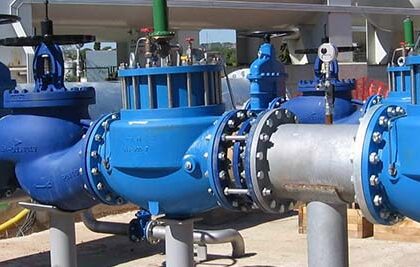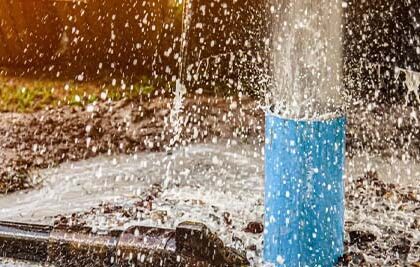Experiencing A High Water Bill? Here Is Why And How You Can Avoid It
Most of the water connections in the developing countries which are managed by some water utility are metered. Universal metering is good as it plays well in the dimension of water use efficiency, ultimately contributing to the sustainability of water resources. On the other hand, universal metering brings about equity. This is done by billing exactly what a particular customer has consumed and not based on guesswork or mere estimation. The billing is normally done routinely, say monthly. However, sometimes the billing is over and above the usual average for a particular customer. In this article, I discuss the possible causes and how sustainably going forward; this can be avoided in or timely managed.
High billing can be caused by different factors. These include:
- Leakages on direct, transmission, or distribution pipes after a utility meter;
- Faulty fixture, and;
- Customer tank
Leakages On Direct, Transmission, Or Distribution Main After A Utility Meter
It should be noted that a customer has a mini-supply system composed of pipes, tank(s), and water use points. These are all connected and supplied by a network of pipes. Direct pipes can be defined as those that supply water use points e.g. kitchen sink, sprinklers without first drawing their water from a customer tank. On the other hand, the distribution pipes are those that draw their water from the customer’s overhead tank. On the other hand, the distribution pipes are those that draw their water from the customer’s overhead tank.
It should be noted that all water supply systems, in this case, inclusive of the mini supply system of customers, are susceptible to developing leakages.
However, in the absence of smart water metering, the responsibility for the operation and maintenance of these systems is up to a customer’s utility meter. This is rightly so because the design, choice of pipe and plumbing material, and installation of fixtures are to the customer’s preference.
The most obvious cause of leakages on the pipe network after the meter is the use of poor-quality pipes not fit for the purpose. Pipes are classified according to the maximum pressure they can withstand depending on their wall thickness. As such, we have Pressure Nominal (PN) of 4, 6, 10, etc. pipes. In view of the recommended standard for utilities to deliver water to customers at a pressure of at least 2.5 bars (or approximately 25m head of water), it is advisable that the selection of the pipes to be used for the mini water system at the customer’s premises match the prevailing pressure from the supplying utility.
However, because most water supply systems in developing countries have not installed pressure monitoring and pressure regulating systems, this makes it very hard to properly ascertain the prevailing pressures in their water supply networks. As a consequence, therefore, pressure variations reaching a customer’s meter point are expected periodically. Considering the above, experience has shown that PN 10 pipes, which are designed to withstand maximum pressures of up to 10 bars or approximately 100m head of water are the most suited for this purpose. Therefore, the use of pipes with a lower pressure nominal than 10 is not encouraged, as it is more susceptible to developing leakages.
Since it is advisable to lay these pipes underground, usually when they develop leakages the water lost via those leaking pores percolates into the ground and rarely rises to the surface for customers to immediately notice.
Overflowing Customer Tanks
Most customers store water in overhead tanks for use in case the water supply is off from the water utility. These tanks, owing to wear and tear can become faulty and consequently begin to overflow. These tanks are controlled by ball valves from overflowing. These tanks are controlled by ball valves from overflowing. However, when these ball valves become faulty, they no longer control the filling of water into the tanks, resulting in overflows.
The good thing, however, is that the tank overflows can easily be noticed and when noticed, water into the tank can be regulated, usually by closing a stop cork or gate valve installed either before or after a utility water meter.
Faulty Fixtures
In the modern home, the use of various plumbing appliances has been adopted to improve sanitation and, in some cases to ease work. As such, appliances such as water heaters, dishwashers, flushing toilets, washing machines, etc. These appliances too are susceptible to wear and tear and can become faulty. Most of the appliances when they become faulty can easily be noticed, e.g. a tap or shower will keep releasing water and upon noticing this, immediate remediation or replacement should be done.
On the other hand, when toilets become faulty, they are not easy to notice but keep flushing a certain amount of water, constantly until this is noticed. If the self-flushing of the toilets proceeds unnoticed for a long time, it leads to high billing. However, a simple experiment can be done to confirm if a flushing toilet is overflowing or not. Simply put a dye in the toilet sink and if the dye appears in the cistern without using the toilet, such a toilet is faulty. The most common faults in toilets are due to breakages of ball valves.
On the other hand, it is also important to note that sometimes the careless use of water is the cause of high billing. Furthermore, sometimes when the supply from a utility is off and upon opening a tap this is noticed, some water users usually forget to close those taps and in case one stays away from home for a long time and water returns and finds the tap open, a lot of water is lost in the process leading to high billing. This should be avoided.
So Then, How Can We Manage Our Water Billing?
The first and most important way of preventing high billing is through the use of pipes and fixtures fit for the purpose. This author recommends the use of water and energy-efficient fixtures while selecting the right pipes depending on the water pressure reaching the customer meter as the best guiding principles. This, however, may require consultation from an expert. And we do exactly that at HYDRO CONCEPTS (U) LTD.
On the other hand, the most appropriate way of easily managing high billing is through the deployment of smart water metering which, upon notice of any fault after the meter immediately sends a warning to both the water utility and the customer. That way, faults are noticed immediately after they occur and remedial actions can be implemented thereby ensuring very minimal loss. In this regard, it is also important to note that even some of the existing water meters can be smartened through the installation of data capturing and transmission technological aspects such as loggers.
Furthermore, the development and deployment of sensors that monitor the customers’ pipe network and/or fixtures with enabled warning systems can be helpful. However, more focused research and development is still needed in this area.
However, in the absence of smart water metering, the steps below can be useful.
Most times customers notice high billing upon receipt of a bill from a water utility. However, this is sometimes very late, after a substantial loss. And yet, this can be avoided by routinely monitoring your meter performance, say twice every week.
The first step to noticing if there is any fault after a utility water meter is temporarily halting the use of water downstream of a meter and noticing its behavior. If the water meter stops registering, this indicates no problem after the meter. However, if the meter continues to count, then it indicates a problem after the meter.
To understand which particular cause it is, start by ruling out overhead tank overflow since this is obvious. Secondly, do the toilets test and if the toilets are ok, then it must be a leakage on the pipe network.
Pinpointing the exact point of leakage on the pipes requires specialized knowledge and equipment if costs are to remain minimal. The use of specialized equipment, the geophones, or ground penetrating radar is the most recommended as these assist in pinpointing the exact point of leakage and consequently exposing around that point can be done and repaired. Otherwise, excavation following the pipes would be the other remaining option. However, this too ought to be done in the presence and guidance of an expert.
High Billing Vs. Equity
Many questions have been raised in the area of high billing and how it relates to equity. For instance, in rented apartments or single houses, if the cause of high billing is a fault in fixtures, tank overflows, or leakages on pipes, who should bear this extra cost? Is it the landlord or the tenant?
These questions will be answered in our next article on this topic.











